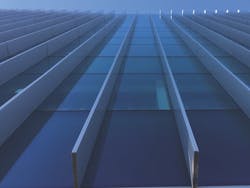Shadow Box Design: To Vent or Not To Vent
A curtain wall shadow box is a spandrel assembly consisting of vision glass at the building exterior and an opaque infill at the interior side of the curtain wall system. Shadow boxes are generally used for one of two aesthetic reasons: to maintain the visual continuity of a curtain wall system as it crosses from vision glass to spandrel areas; or to give the spandrels the quality of having visual depth. In 2017, Perkins+Will conducted a comprehensive review of literature related to the design of shadow boxes, including their failure and subsequent remediation.
LEARNING OBJECTIVES
After reading this article, you should be able to:
- DESCRIBE the primary applications for shadow box assemblies in curtain wall systems.
- DISCUSS the most common reasons why shadow box assemblies fail.
- IDENTIFY the primary ventilation strategies for curtain wall shadow box assemblies.
- UNDERSTAND the pros and cons of different ventilation strategies for curtain wall shadow box assemblies.
Sign up for Building Design+Construction Newsletters
Get the latest news and updates.
